Reflections on the accuracy of shooting at the outset of the Tsushima battle
Since pre-revolutionary times, the opinion about the low level of artillery preparation as one of the reasons for the defeat of the 2nd Pacific squadron has become a commonplace. We have no documents that can confirm or deny this narrative, but there are a number of available sources, information from which allows us not only to assess the level of training of Russian artillerymen, but also to compare it with the level of training of Japanese artillerymen according to such a criterion as shooting accuracy.
In our small research, we will rely primarily on the "Timeline of hits on Japanese ships" from the famous site and information from the article by D. Campbell "The battle of Tsu-Shima", published in 1978 in the "Warship International" magazine. As you know, the article is based on information gleaned from the report of the British observer Captain W. Pakenham (Captain William C. Pakenham), addressed to the British Admiralty and published in 1917.
As you know, during the Battle of Tsushima, a Russian 12 "shell hit the aft barbet installation of the battleship" Fuji ", in addition, on two Japanese battleships during firing, despite the preventive measures, characteristic incidents related to the 12" armor-piercing shimoza equipped shells of the AR 2 type, the hulls of which were made in Japan. The time and number of shells fired at the time of these events indicated by W. Pekinham will help us not only to estimate the rate of fire of the damaged guns, but also make it possible to assume how many shells of the main caliber could be fired by four Japanese battleships in 34 minutes and in 40 minutes, i.e. by the time the battleship "Prince Suvorov" went out of action at 14:44 (hereinafter, the time is indicated in Japanese) and by the time the battleship "Oslyabya" was lost at 14:50, respectively.
1) The right gun of the stern barbette installation of the battleship "Fuji", which was no longer used after it was hit at 14:58 (according to other sources, at 15:00) by fragments of a Russian shell (the new gun was installed on June 16, 1905, ten days after dismantling the damaged), fired twelve shells in 47 minutes. The average rate of fire for this gun will be 235 seconds per shell. Therefore, in 34 minutes the gun could fire nine shells, in 40 minutes - ten.
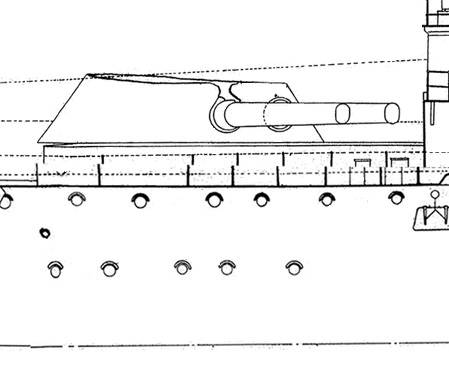
2) The right gun of the bow barbette installation of the battleship "Shikishima", disabled by the premature burst of a shell at 16:13 (the new gun was installed on June 18, 1905), fired eleven shells in a maximum of 79 minutes. The average rate of fire for this gun will be 430 seconds per shell. Consequently, in 34 minutes, the gun could fire five shells, in 40 minutes - six.
3) The right gun of the bow barbet launcher of the battleship "Mikasa", disabled by the premature burst of a shell at 18:02, fired twenty-eight shells in a maximum of 134 minutes.
The average rate of fire for this gun is 287 seconds per shell. Consequently, in 34 minutes the gun could fire seven shells, in 40 minutes - eight.
Thus, three 12 "guns of the three Japanese battleships (" Mikasa "," Shikishima "and" Fuji ") could fire twenty-one shells during the first thirty-four minutes of the Tsushima battle, and in forty minutes - twenty-four. For this battleship, the average rate of fire of the other three battleships was taken, that is, seven and eight shells in 12 minutes and in 34 minutes, respectively, to determine the rate of fire of 40 "Asahi guns for the indicated time intervals.
Further arithmetic calculations show that all sixteen 12 "guns of the 1st combat detachment by the time the battleship Prince Suvorov failed at 14:44 could have fired up to 112, and by the time the battleship Oslyabya died at 14:50 - up to 128 shells (presumably from the ships of the 1st and 2nd combat detachments, about 107 8 "shells and about 790 6" shells could have been fired into the battleship Oslyabya, of which a maximum of five and eleven shells, respectively, would have hit the target).
Naturally interesting is the question: how many shells of the main caliber could hit the target?
In the battle of Port Arthur, depending on how many 12 "shells actually hit the target, the accuracy achieved by the Japanese with 12" guns ranged from 7,32% to 12,12%, and in the battle at Cape Shantung from 9,45% to 10,1%. If we extrapolate the largest of these indicators (12,12%) to the firing of Japanese battleships in the first phase of the Tsushima battle, and then round the resulting figures up, we get a maximum of fourteen 12 "shells that could theoretically hit the Russian battleships by the time they left building the battleship "Prince Suvorov" and a maximum of sixteen 12 "shells, which theoretically could have hit the Russian battleships at the time of the death of the battleship" Oslyabya ".
Now let's compare the calculated fourteen and sixteen possible hits of Japanese 12 "shells with shells of the same caliber that actually hit Japanese ships. Russian battleships, according to the" Chronology of hits on Japanese ships ", from 14:07:40 to 14:50 managed to achieve twelve straight hits by 12 "shells, including six into the battleship Mikasa" (14:14; 14:20; 14:21; 14:22; 14:25; 14:47) and one each into the armored cruiser "Kassuga" (14:33); "Nisshin" (14:40); Azuma (14:50); Yakumo (14:26); Asama (14:28) and Iwate (14:30).
However, there is reason to believe that this is not all the hits of 12 "shells received by Japanese ships in the period under consideration. So, according to the report of the British attaché Captain T. Jackson (RN), who observed the battle from the armored cruiser" Azuma " , the ship received three more hits. In the first case, the combat report refers to a "large projectile" that exploded at 14:27:30 on the starboard side, and several fragments of which flew at the specified time over the stern of the cruiser. In the second case, the British Atache identifies the shell hit at 14:37 as 12 "and describes in detail the impressive effect of its explosion and the serious consequences of this hit. In the third case, it is said about a 12 "shell, which at 14:47 hit the barrel of the right gun of the stern tower.
The number of 12 "shells hit on both sides, a maximum of 14-16 Japanese against a minimum of 12-15 Russian, is comparable. However, from the Russian side, theoretically, a greater number of 12" guns could fire: 26 against 16 Japanese. How many of them actually fired, as well as the number of 12 "shells they fired, is unknown. However, if we talk about the consumption of shells of the main caliber on battleships of the" Borodino "type, which account for the lion's share of 12" shells that hit Japanese ships, then one can refer to the "Eagle", which fired fifty 14 "shells (two armor-piercing and 12 high-explosive) and 48 345" shells (6 armor-piercing, 23 high-explosive) in the daytime battle on May 322, which is much less than the consumption of ammunition of similar calibers for any Japanese battleship ...
With approximately the same number of 12 "shells hit in the first forty minutes, Japanese fire turned out to be much more effective than Russian, which later (as predicted in his report by Captain W. Packenham) gave rise to the writing fraternity, some historians and memoirists to overestimate the accuracy of the Japanese Analyzing the result achieved by the Japanese, the British observer gave in his report the main, in his opinion, components of the success of the attack on our two flagship battleships.
Comparing the results of two general battles, he noted that in the battle at Cape Shantung, the expectations of the Japanese were deceived, their 12 "shells not only did not cause the expected damage to enemy ships, but also did not cause a single serious fire on them. The conclusions were made, and the result The impact of the same shimosa on the ships of the 2nd Pacific Squadron exceeded the expectations of its most ardent fans.During the repair and partial modernization of the Japanese battleships to which they were sent after the fall of Port Arthur, the ammunition load of the main and medium caliber guns was changed and increased. Instead of ninety 12 "shells (50 armor-piercing and 35 high-explosive), one barrel began to rely on one hundred and ten (30 armor-piercing and 80 high-explosive). 12 "shells of low-quality (read: Japanese) production were for the most part replaced by shells of foreign production, and restrictions were imposed on the use of the rest. Looking ahead, we recall that if on July 28, 1904," Mikasa "fired 96 high-explosive and 76 caliber, then in the Tsushima battle, he fired the same 96 high-explosive shells of the main caliber, but only 28 armor-piercing.
According to Captain W. Packenham, the old fuses were replaced with less sensitive ones, but even after this measure
Nevertheless, a comparison of the results of the inspection of the dumped Port Arthur battleships and the "Eagle" showed that before the appearance of the modified fuse, the energy losses of the shimosa explosion were much greater, which, in our opinion, is clearly illustrated by the following facts. By 14:48 the mainmast and rear chimney on the "Prince Suvorov" were shot down, while on the "Tsesarevich" the rear pipe withstood, despite being hit by two 12 "high-explosive shells. As well as its foremast, by 9/10 diameter broken by the explosion of the "suitcase." As stated in the report,
In addition to the new fuses, according to Captain W. Packenham, the frequency of hits in the Tsushima battle also affected. Before failing, "Tsarevich" received up to fifteen hits 12 "shells," Prince Suvorov ", according to our estimate, about the same number. But if" Prince Suvorov "these 12" shells hit within forty minutes, then " The Tsarevich "received the first 12" shell at 13:05, and the last one at about 18:45.
In addition to the above factors, which, in the opinion of the British attache, contributed to the success of the Japanese, it is necessary to mention others that are known to us from domestic sources. First of all, it is worth mentioning the successful distribution of the hits of the "suitcases", the consequences of the explosion of which were tragically superimposed on both negligence during operation and the unsatisfactory quality of construction, as well as on the design flaws of individual units and elements of ships: from the valves for flooding the "Oslyabi" cartridge magazines, small section which was not allowed to straighten the list of the ship, to the conning tower of "Prince Suvorov", the mushroom-shaped overhang of the roof of which repeatedly caught the fragments reflected from below and directed them inside the wheelhouse. Speaking of optical rangefinders, one cannot but mention that there were two of them on the "Prince Suvorov" (FA 3), and both were rendered unusable by fragments that fell into the conning tower at 14: 23-14: 27 due to an unsuccessful tower structures. At the same time, on the battleship "Mikasa" the entire battle distance was determined by one FA 2 rangefinder (and not dozens, as A.S. Novikov-Priboy claimed), which was served by midshipman K. Hasegawa (ensign Kiyoshi Hasegawa), who stood openly on the bridge not far from Admiral Togo. The optical sights of Lieutenant Perepyolkin of the 1899 model of the year, after the very first volleys, began to fog up from the soot of smokeless powder, spray and smoke from the explosions of enemy shells, and the shocks from the shots quickly and easily mismatched the sight scale, the sighting line itself and the axis of the gun. On April 14, 1905, the Japanese received the latest telescopic telescopic sights from J. Hicks, Hatton Garden ”, more perfect than they had before. The smokeless powder, which was used in the charges, after a long stay in the tropics, changed its chemical properties due to the evaporation of ether. As a result, its ballistic properties have also changed. Firing tables were compiled for gunpowder with some characteristics, and charges were loaded into the gun with others. The fire control devices stopped working shortly after the start of the battle. In the shortest possible time, on many ships, the wires were damaged, through which instructions were transmitted from the conning tower to the Geisler dials. Each plutong officer had to determine the distance by eye, as a result, we, not seeing the fall of our shells, fired without knowing the distance. On the Japanese battleships, orders about the direction of fire and the distance to the target were transmitted from the bridge with the help of horns, first by a messenger, and then relayed in the form of orders written on boards.
Summing up, we can state that with the beginning of the Tsushima battle, various negative factors gradually began to affect the firing accuracy of the Russian battleships (which the Japanese gunners did not have to face), coupled with the multiplying damage to the material part, which gradually reduced the combat training of Russian artillerymen to nothing.
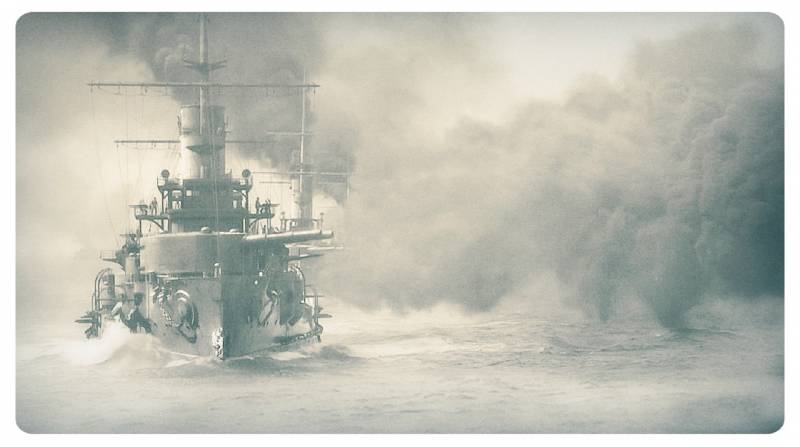
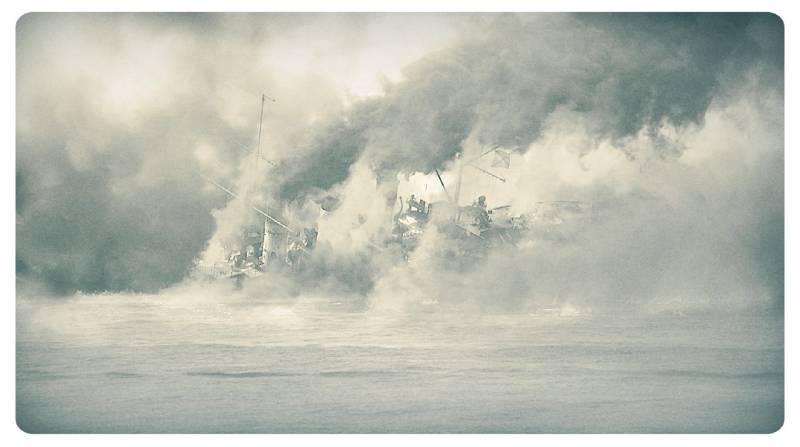
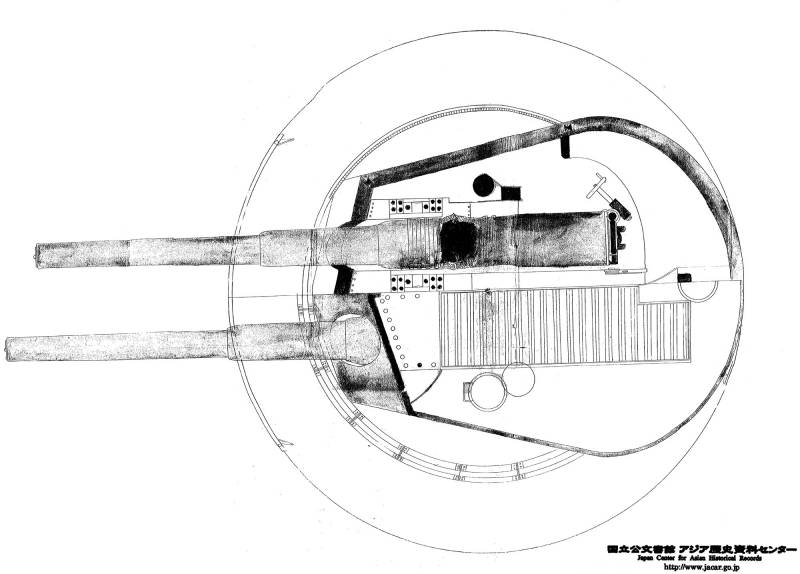
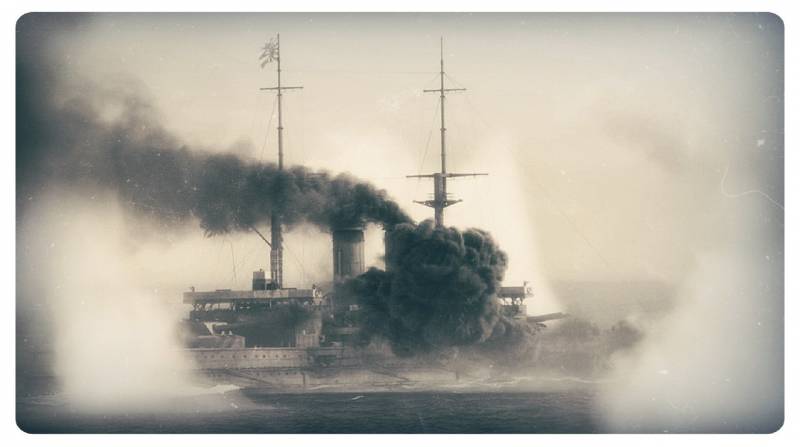
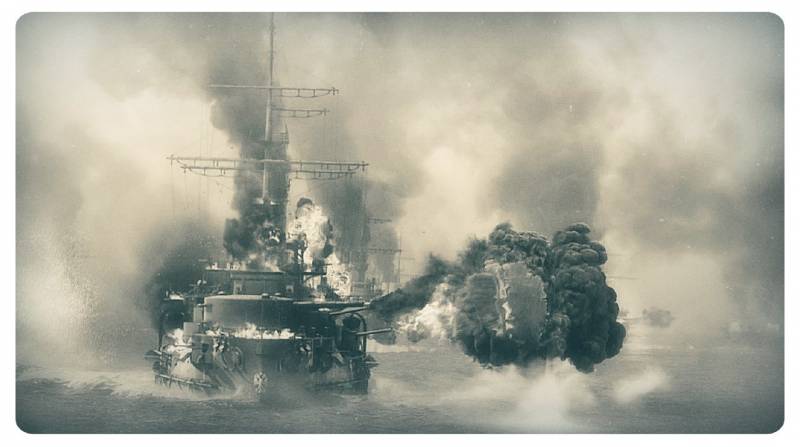
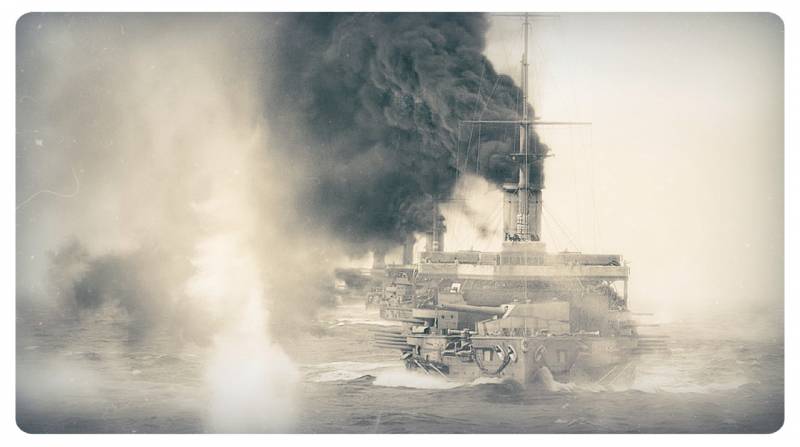
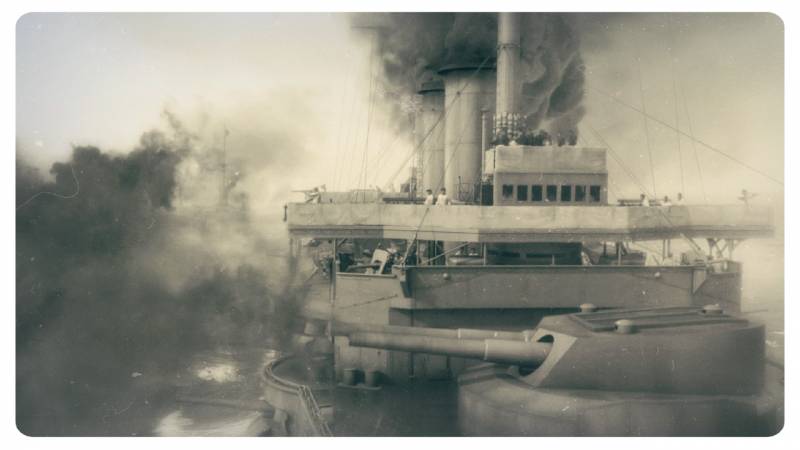
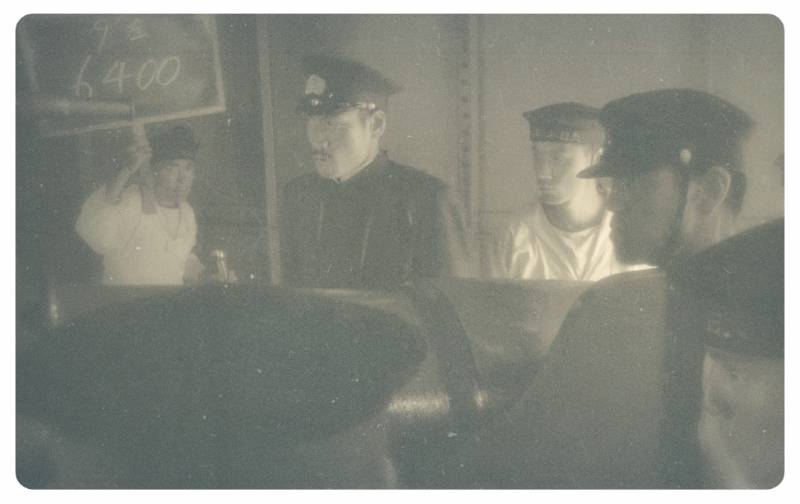
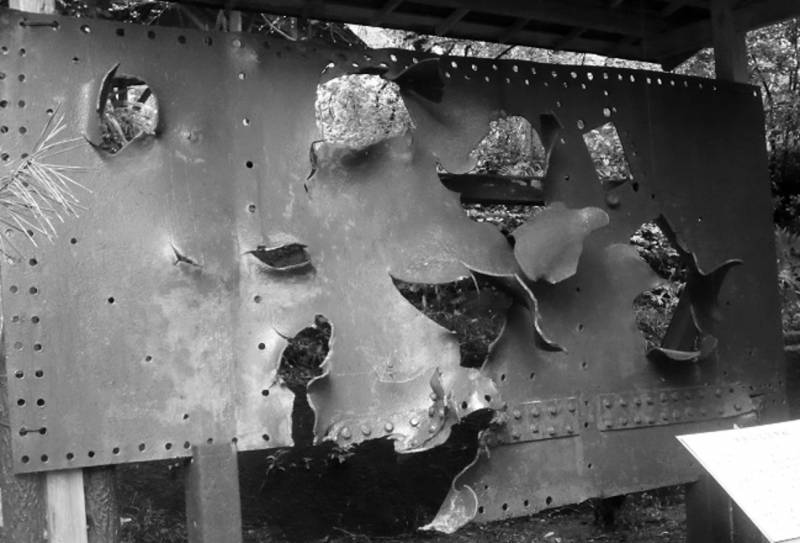
Information